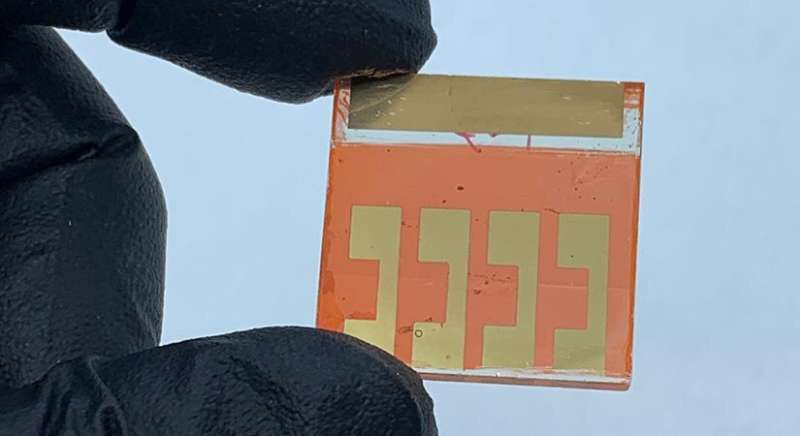Scientists discover way to improve perovskite efficiency and stability

Researchers at the National Renewable Energy Laboratory (NREL) and affiliated institutions across the country have bolstered the efficiency of perovskite solar cells by as much as 16%.
The effort involved combining a two-dimensional (2D) perovskite layer with a three-dimensional (3D) perovskite layer, which yielded a solar cell with improvements in both efficiency and stability. Ongoing research into the crystalline structure of perovskites as a cheaper and more efficient alternative to silicon solar cells has resulted in considerable technological advances, with reported efficiencies as great as 25.5%.
Kai Zhu, a senior scientist in the Chemistry and Nanoscience Center at NREL and a corresponding author on the new paper outlining the research, said that the melding of the 2D and 3D layers could boost the efficiency of the solar cell to about 24.7%.
The paper, "Metastable Dion-Jacobson 2D Structure Enables Efficient and Stable Perovskite Solar Cell," appears in the journal Science.
The article has 23 authors from seven institutions, including NREL. In addition to Zhu, the others from NREL are Fei Zhang, So Yeon Park, Haipeng Lu, Sean Dunfield, Chuanxiao Xiao, Xihan Chen, Laura Schelhas, Glenn Teeter, Joseph Berry, Matthew Beard, and Bryon Larson. Other researchers are from the SLAC National Accelerator Laboratory, University of Toledo, Princeton University, University of Arizona, University of Kentucky, and University of Colorado.
The researchers veered away from another experimental approach involving adding a 2D layer based on bulky organic cations, or positively charged ions. That type of 2D perovskite structure, known as Ruddlesden-Popper, can inhibit the movement of charge carriers, thus limiting efficiency.
The newer research used a different 2D perovskite structure, known as Dion-Jacobson, in a metastable polymorph, which has shown greater stability and an ability to move charge carriers more freely.
The scientists compared the modified perovskite cell to a control sample. The modified cell showed only a 10% drop in efficiency after 1,000 hours of continuous operation. The control sample saw its efficiency decline by 43%.
The researchers said that the use of the metastable 2D structures represents a promising new chemical design that can be adapted by the solar industry to accelerate the development of efficient and stable perovskite solar cells.
More information: Fei Zhang et al, Metastable Dion-Jacobson 2D structure enables efficient and stable perovskite solar cells, Science (2021). DOI: 10.1126/science.abj2637. www.science.org/doi/10.1126/science.abj2637


















